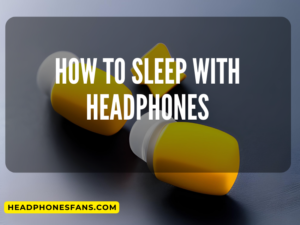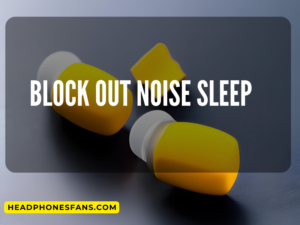Audio engineering is full of debates. One that is particularly popular is the sealed vs. ported subwoofer box argument. A subwoofer enclosure or “box” is the container where the subwoofer is mounted. This box is crucial for the speaker to be able to produce low-frequency sound, or bass.
There are two common subwoofer enclosure types: sealed and ported. A sealed enclosure does not allow air to escape. On the other hand, a ported box has a “port” that allows air to enter and exit. The sound of the subwoofer is greatly affected by this key difference. Which one is better? It depends on what you like to listen to and how you plan to use the subwoofer.
- Sound Quality is a Matter of Preference
- Home Theater vs. Live Events
- Understanding the Science: Small Parameters/Thiele
- The trade-off: Efficiency and Power Handling
- Size and Space: Consider Before You Buy
- Customize DIY Enclosures
- Models to Consider: Bringing theory into practice
- Listen before you buy
Sound Quality is a Matter of Preference
You might choose the subwoofer sealed enclosure if you are an audiophile looking for accurate sound reproduction. The air in a sealed enclosure acts as a sound absorber. This allows the subwoofer’s input signal to be closely followed, which results in better sound quality and tighter bass. They are popular with those who listen to classical or other genres that require accurate bass reproduction.
Ported enclosures with an additional vent or port create a more powerful and resonant sound. This enclosure type uses air movement to boost output at specific frequencies. A ported enclosure is a good choice if you prefer music that has a heavy bass like hip-hop or reggae.
Pro Tip: When choosing a subwoofer enclosure, you should always consider its quality. To find the best subwoofer for your needs, visit our headphone comparison or best Sony headphones.
Home Theater vs. Live Events
The application may also influence your subwoofer enclosure choice. In a setup for home theater, a sealed enclosure can often offer a more immersive audio experience thanks to its accuracy. This precision allows for seamless sound blending, from the whispers of characters to thunderous explosions in action scenes.
When it comes to live events, however ported enclosures tend to be the preferred choice. Ported subwoofers are able to fill large spaces with sound thanks to their ability of producing louder volumes. These subwoofers are ideal for DJ sets where the music is often characterized by strong bass.
You might consider before making your choice, reading up on the differences between audio equipment such as the Yamaha TSR700 vs Denon S760H or the Denon X3700H vs Marantz SR6015 to ensure that all of your gear is compatible with your needs.
Understanding the Science: Small Parameters/Thiele
The parameters Thiele/Small are a
Set of electromechanical parameters which define the low-frequency performance of a speaker driver. When deciding whether to use a sealed enclosure or a ported one, these parameters are crucial.
- Fs : This is the frequency of resonance for the driver when it’s in the open air. This can have a significant impact on the sound of the driver, and help to determine what type of enclosure is best for the driver.
- Qts is a measurement of the control that the speaker has on the cone for low frequencies. A lower Qts indicates better control and is better for sealed enclosures.
- Vas : This parameter represents a volume of air with the same acoustic compliant as the suspension system for the driver. It is used to determine the optimal volume of the enclosure.
Understanding these parameters, which may sound a little technical, can improve your audio experience. Just as knowing the workings of noise-canceling headphone, or the dynamic drivers in headphones, can help you to make an informed purchasing decision.
We’ll explore the pros and cons in the next section, which will include power handling, space requirements and more. We will continue to debunk the mysteries of audio engineering.
The trade-off: Efficiency and Power Handling
The power handling and efficiency of the enclosures also makes a difference.
Seal enclosures are known for their ability to handle high levels of power without distortion. It is the perfect choice for those who value sound quality above volume. These enclosures are less efficient than their counterparts with ports. These enclosures require more power in order to achieve the same volume. This can put strain on your amp.
Ported enclosures are more efficient, and they can produce a higher volume with less power. It can produce a “boing” bass, which some listeners like. This is especially true in genres such as rock and EDM. This can be at the expense of accuracy, particularly at the extremes of the bass spectrum.
Pro Tip: If you want to get the most from your subwoofer you should consider buying a good amplifier. Check out our comparison of the Skar SDR-3X8D2 and Kicker45TL7R102 for some inspiration.
Size and Space: Consider Before You Buy
Size and space are also important when deciding between a sealed enclosure and one with a port. Due to the extra space needed for the port, ported enclosures tend to be larger than sealed enclosures. If you have a limited space to work with, like a small car, or a smaller room, then a sealed enclosure may be the better option. If you have plenty space, you might prefer a ported enclosure.
Remember that size and space can affect not only your subwoofer enclosure, but also your choice of speakers. If you are looking for smaller speakers, our list of the Best Bookshelf Speakers Under $2000 might interest you.
Customize DIY Enclosures
Customization is another factor to consider before choosing between a sealed or ported enclosure. You can customize your enclosure with some basic woodworking knowledge and the right tools.
You can create a sound system that is unique to you if this is something you enjoy doing yourself. To ensure your subwoofer is paired correctly with the appropriate equipment, check out our guide on how to match amps and speakers.
We’ll then dive into specific models to show you how they can be used in real life. This will help guide your choice.
Models to Consider: Bringing theory into practice
Let’s look at some models to help you make an informed decision. These models will show the differences between sealed and ported speakers. The Klipsch SL-120 or the Klipsch RS-120SW will provide you with powerful bass performance.
Klipsch SPL-120 sealed subwoofer delivers a tight, accurate bass response. If you enjoy genres such as jazz and classical music, which require accurate low-frequency reproduction.
Klipsch R-120SW, on the other hand is a subwoofer with ported design that produces high-volume bass. If you enjoy action movies or music with a lot of bass, this is the perfect choice for you.
It is important to match your amplifier with the model that you select. You can learn more about the best options by reading our detailed comparison between Denon SR6015 and Denon X3700H.
Listen before you buy
The final decision on whether to choose a sealed or ported enclosure for your subwoofer is one that you should make based on the media and listening habits of the listener, as well as the limitations of their listening environment.
Quotation: In the end, music is everything. “Music is about the way it makes you feel.”
It’s always best to try out different models, in both configurations, before making a purchase. Bring your favorite music and test out which headphones bring out the best of it. Check out our guide to the Best Budget Audiophile Headphones for a variety of options that will make your listening sessions more enjoyable.
It doesn’t matter whether you go for a sealed enclosure or a port-out subwoofer enclosure. What matters is that you enjoy listening to it. HeadphonesFans.com is here to help you enjoy your audio experience by providing detailed information and reviews on headphones and sound systems. Please don’t hesitate to contact us if you have questions or require further assistance. We are happy to assist you!

Hey there mobile audio lovers! My name is Darlene R, founder and chief editor at headphonesfans.com. Ask any mobile audio fanatic, installer, or company rep what makes a good car speaker, sub or amp, or, better yet, why he or she prefers a certain brand over another, and be prepared to endure a litany of opinions, viewpoints, and passion-fueled perspectives. To be honest, mobile audio shopping can be a daunting task without a guide, so I’ve assembled what I feel are the best products to consider to make things easier for you. Welcome headphonesfans.com!





